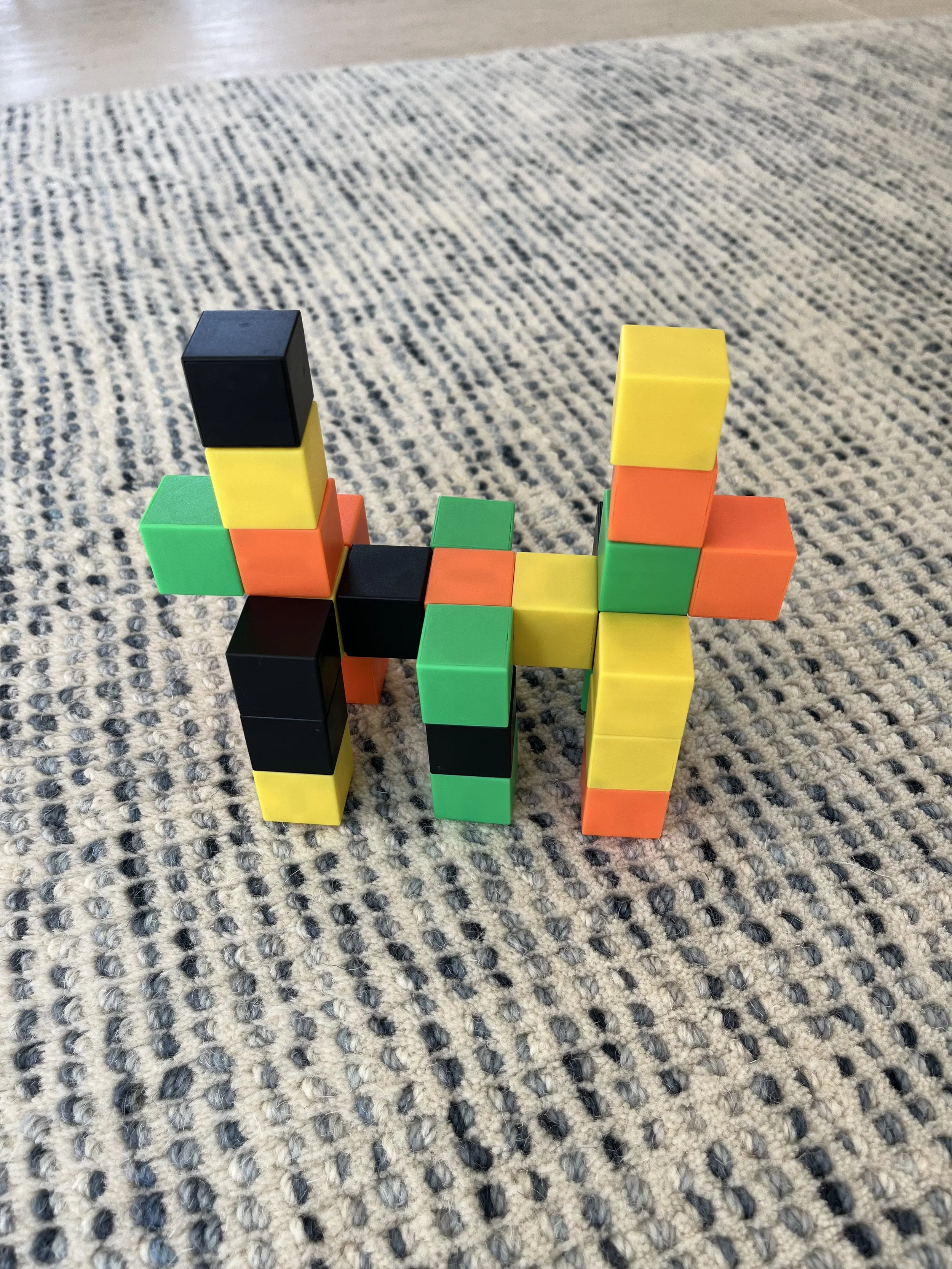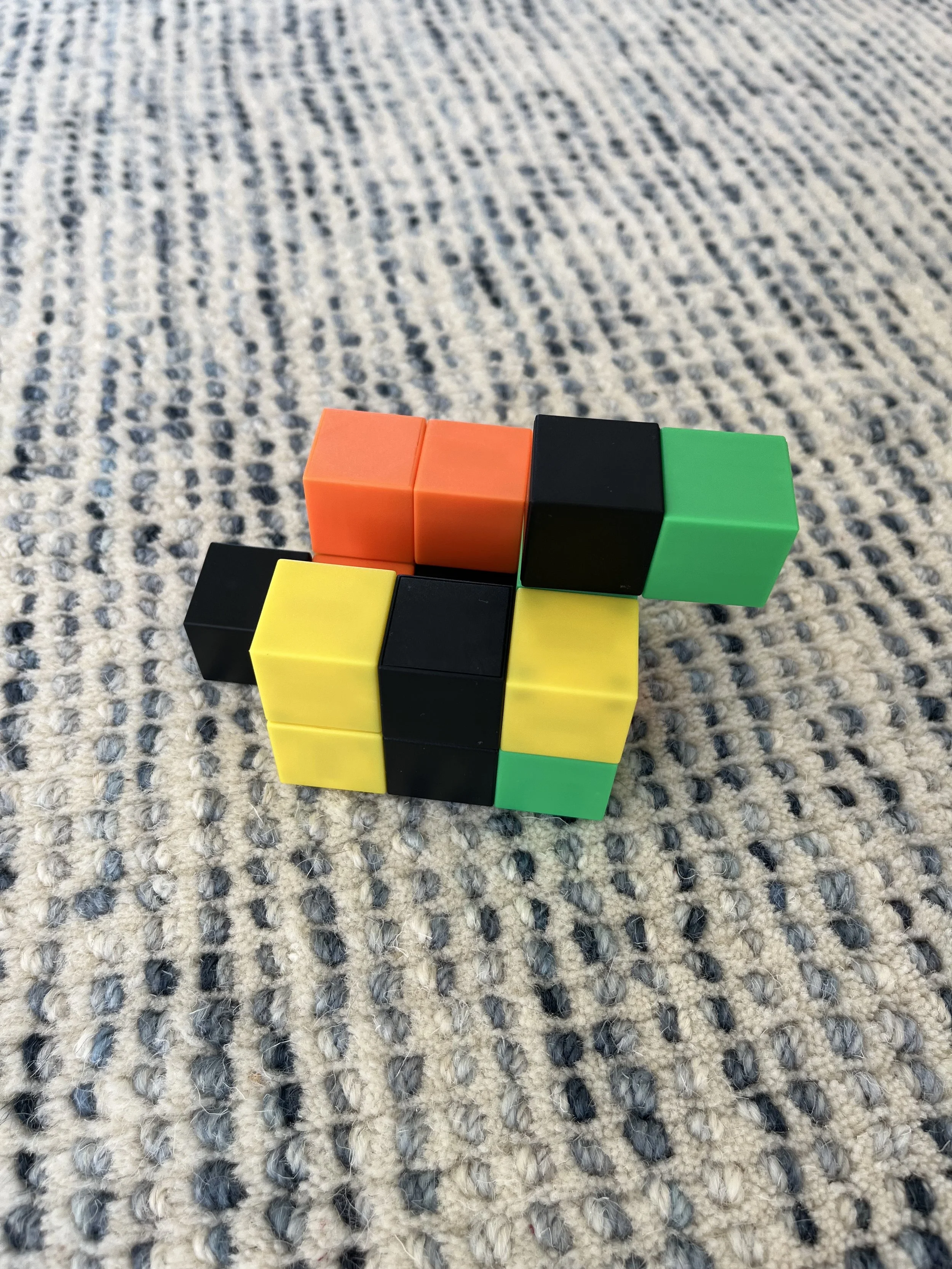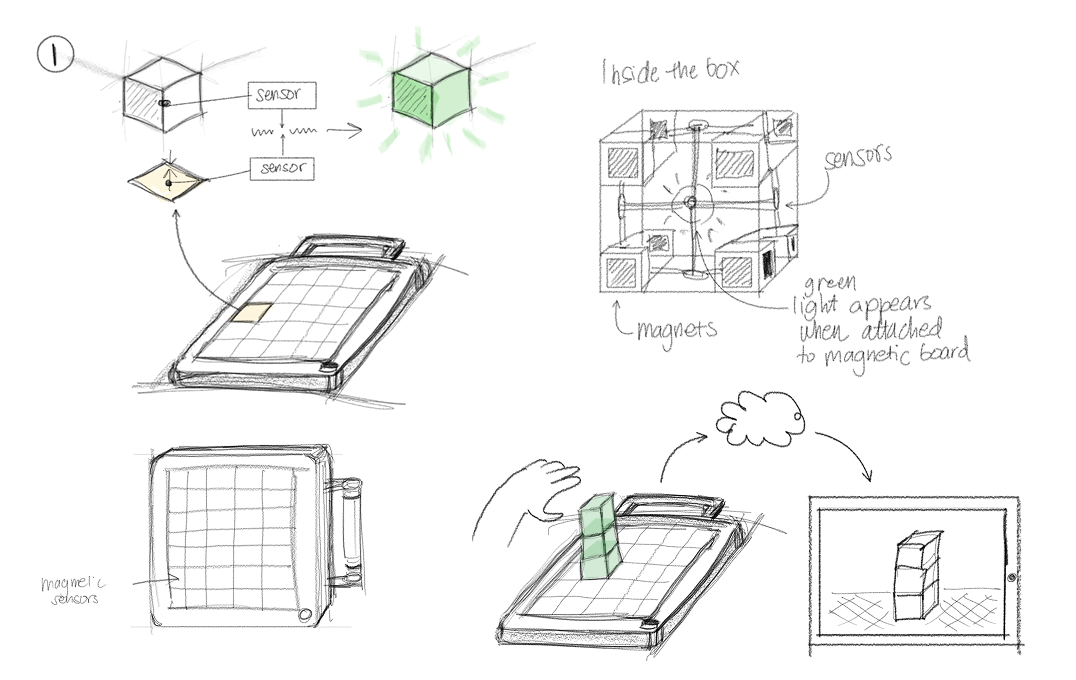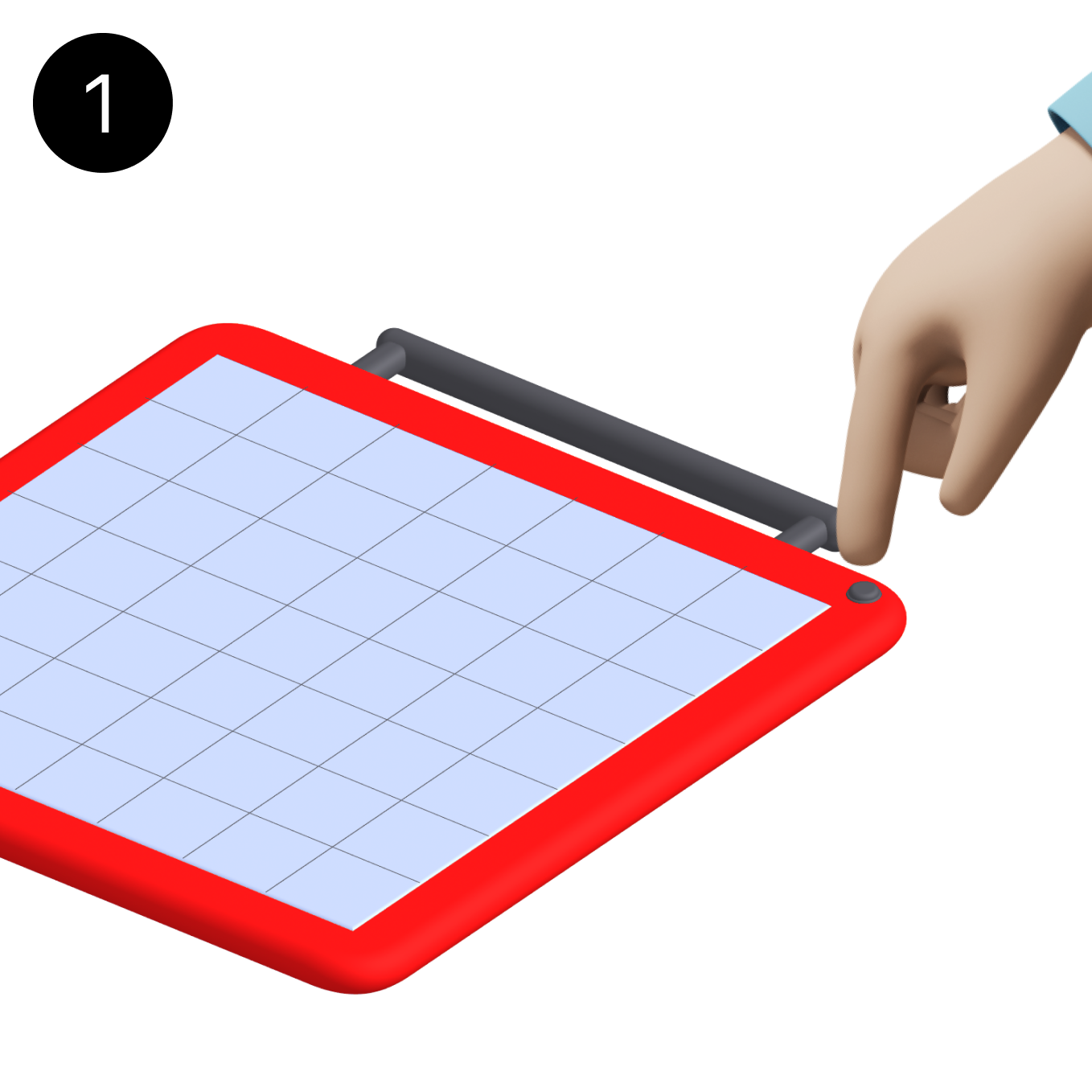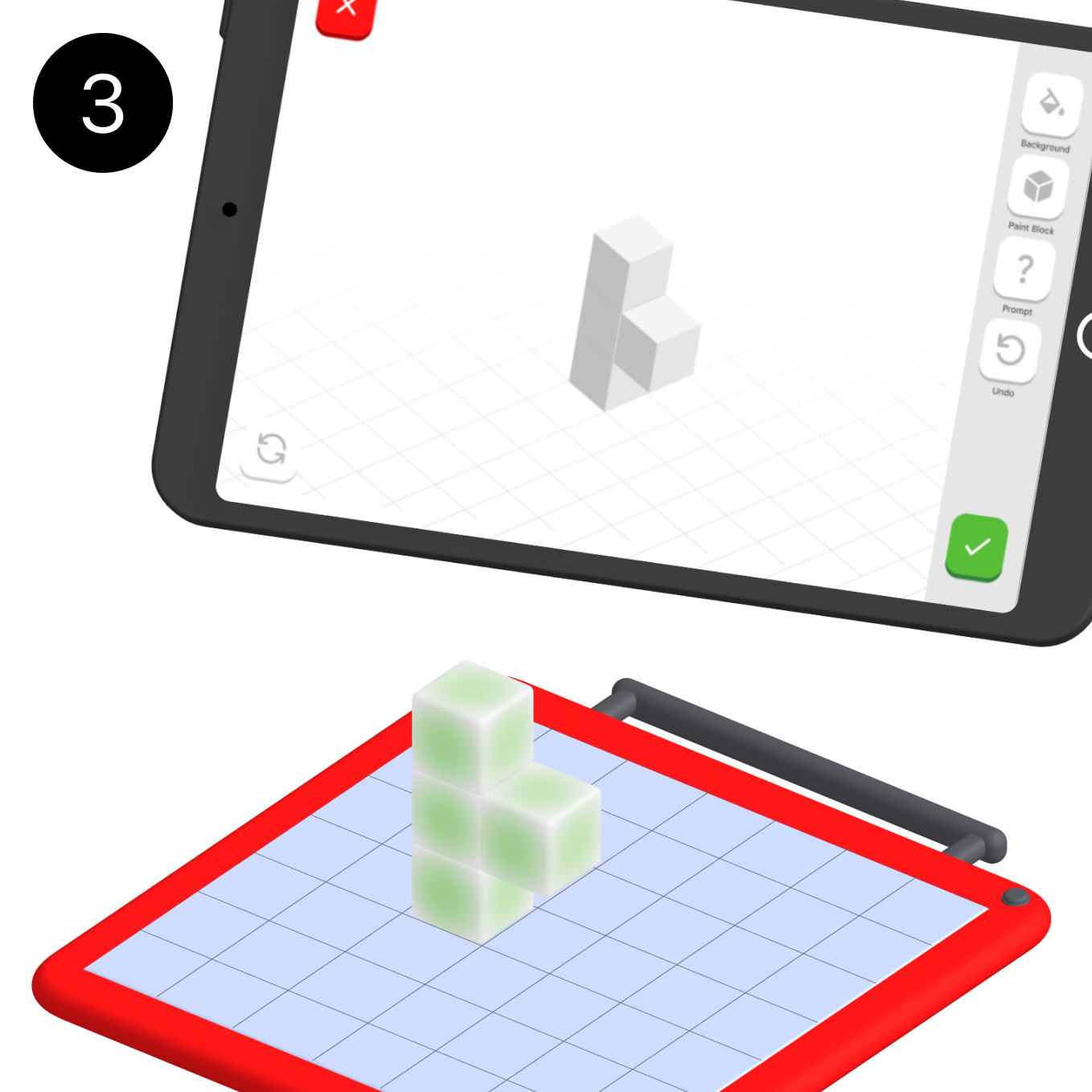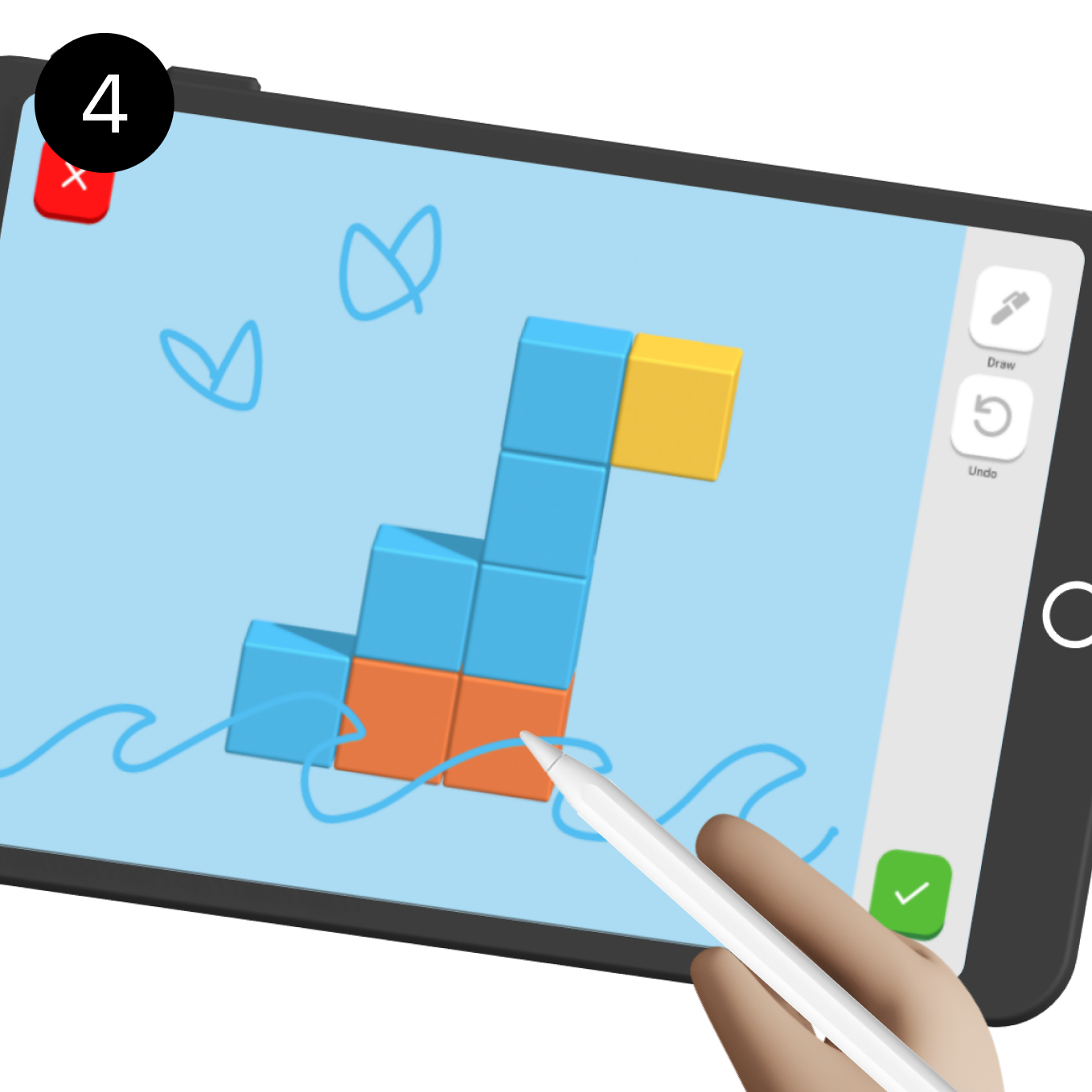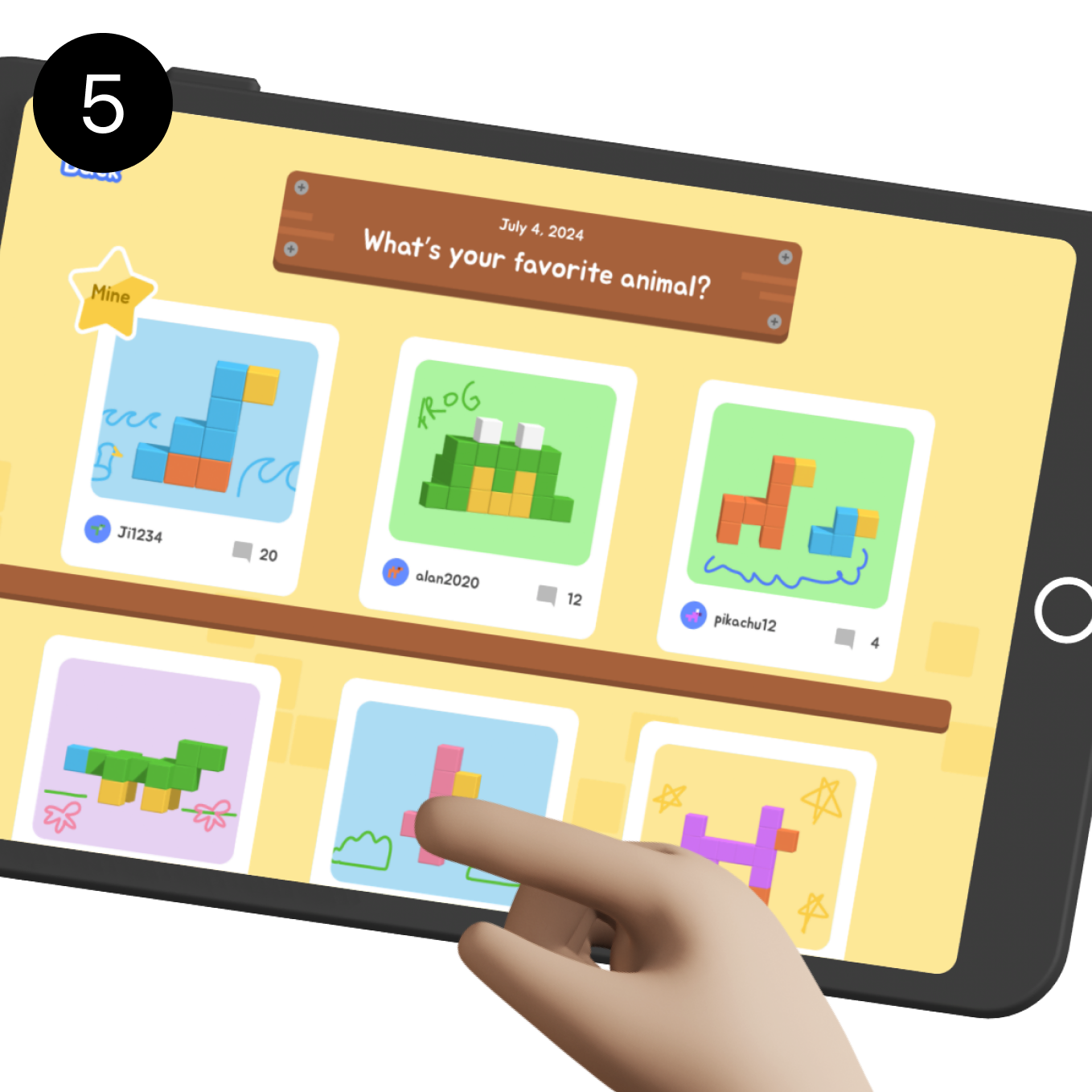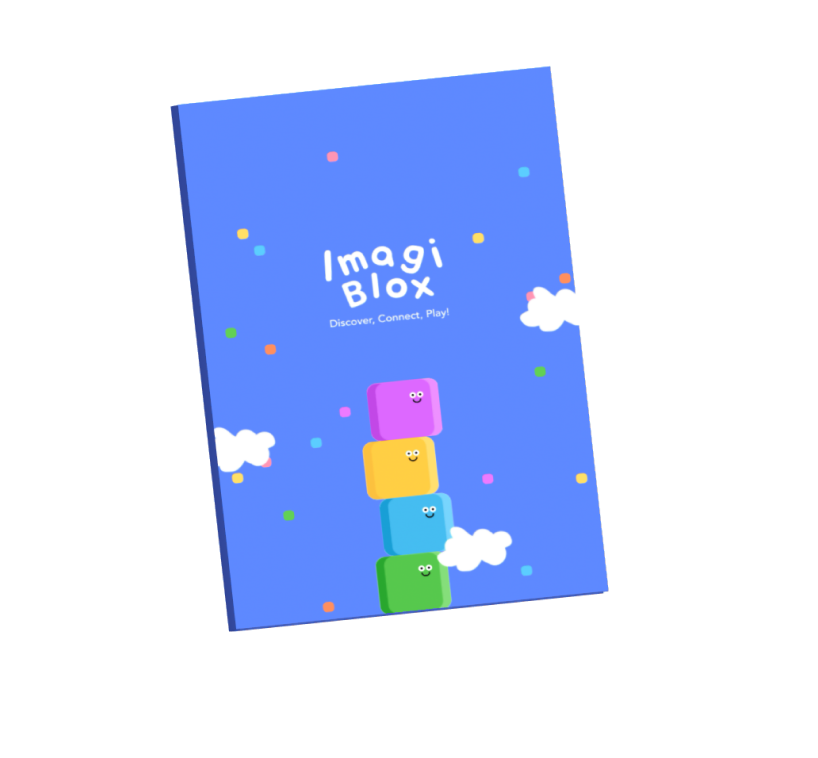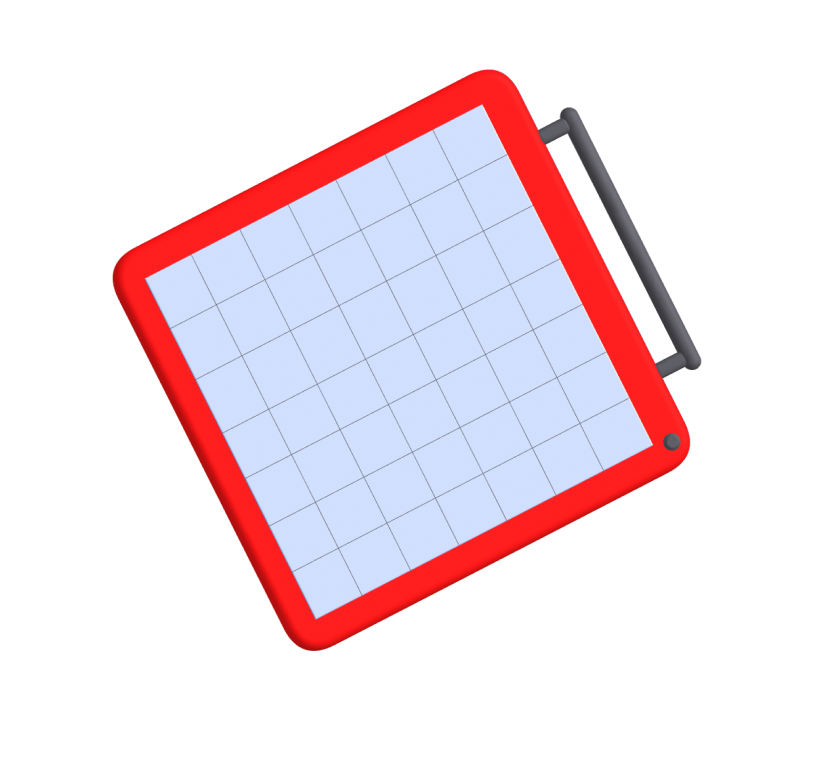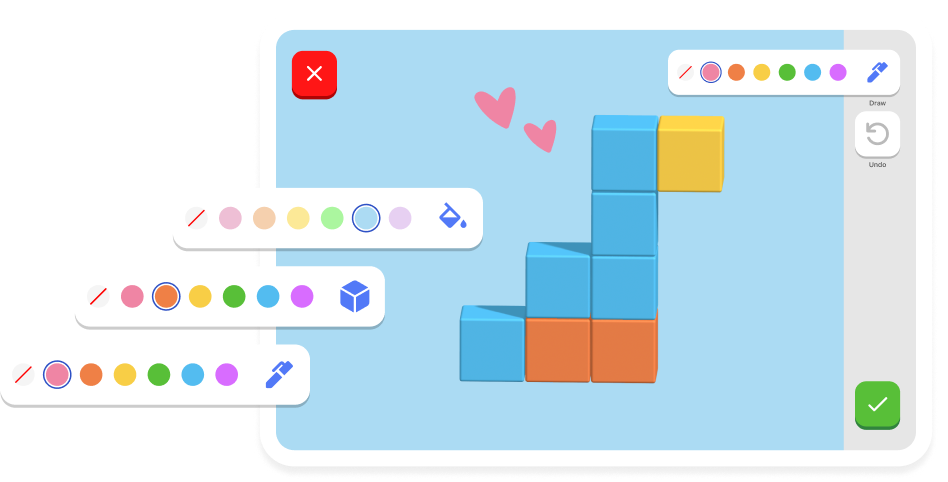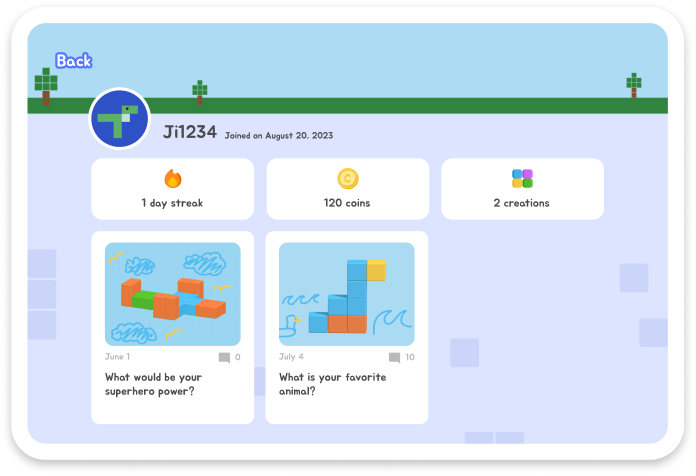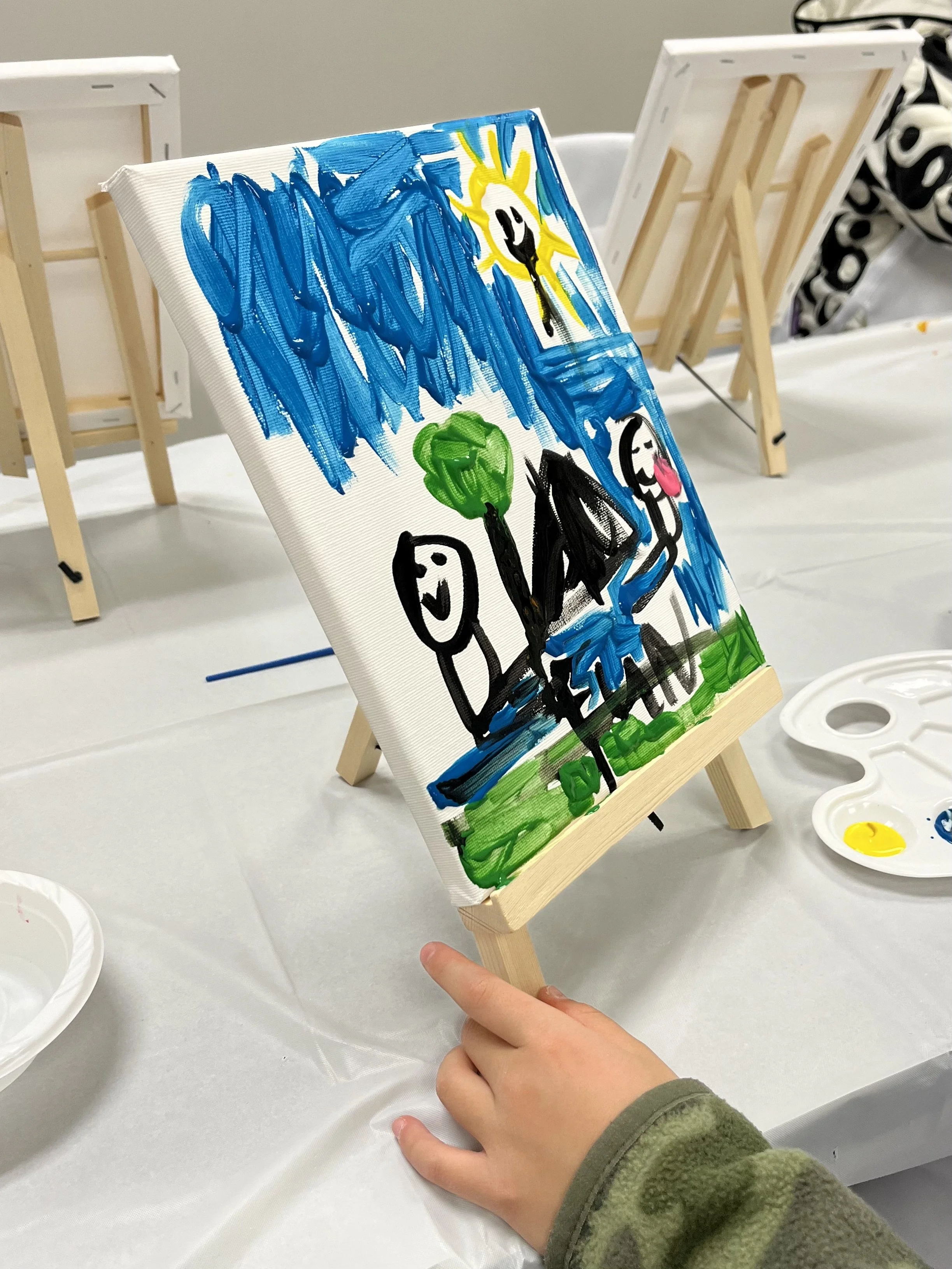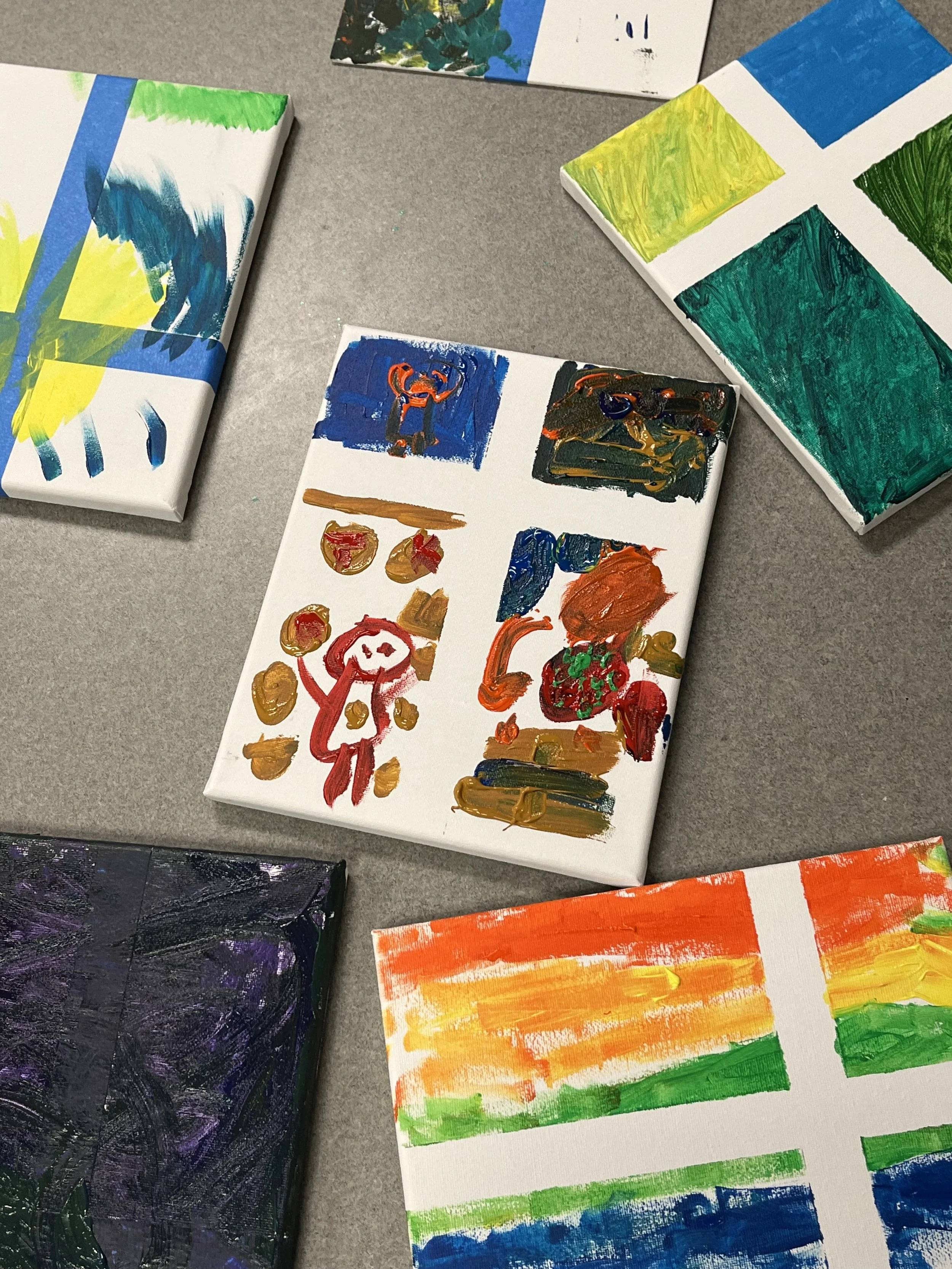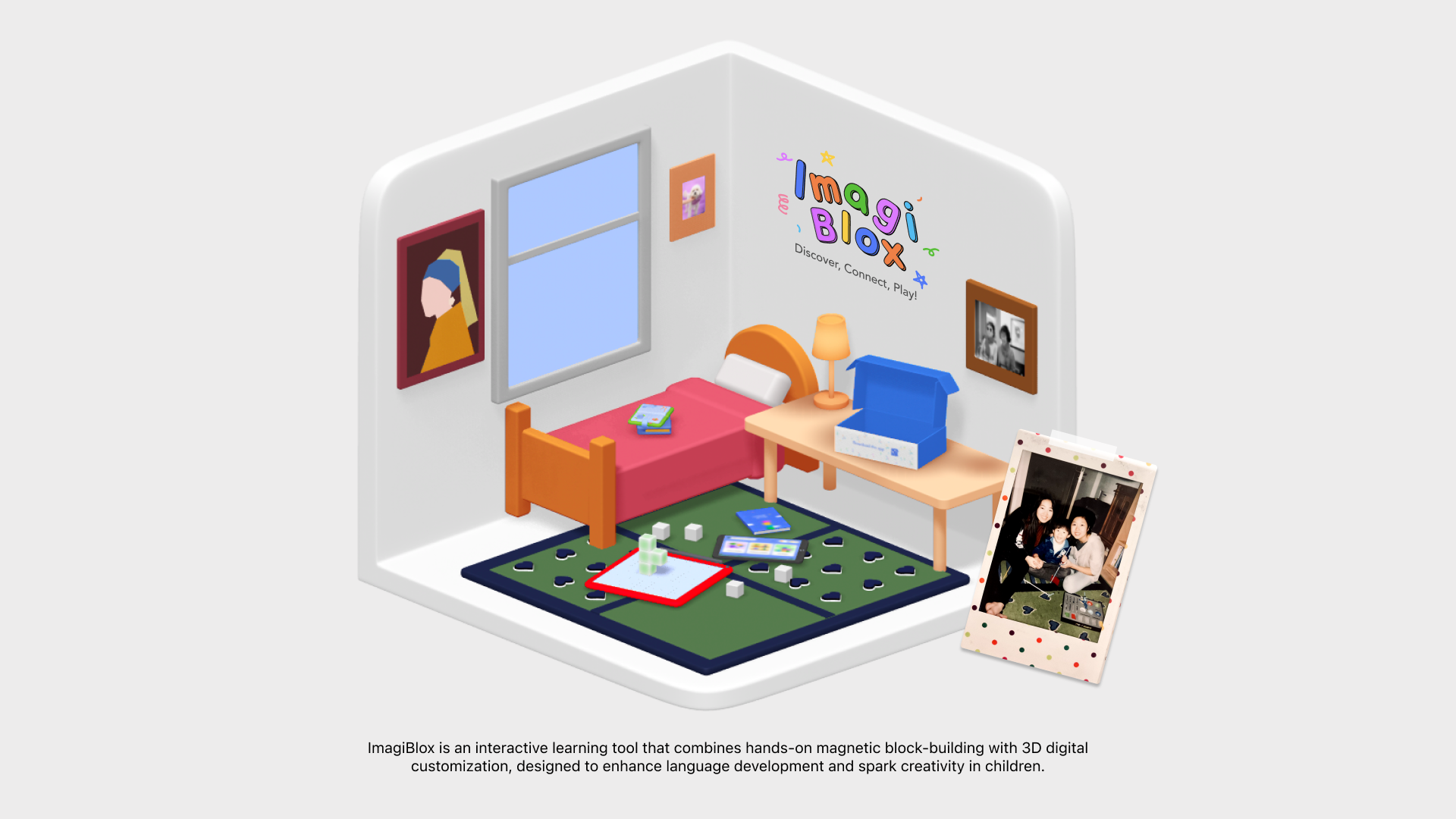
Reimagining Learning Through Play: The Story of ImagiBlox
Conceptual Toy Product
As a childcare volunteer, I noticed a wide range of developmental and communication needs among children with autism. Every kid was a unique case, but seeing one child’s fixation with magnetic blocks inspired me to create a learning tool that explores creativity through hands-on play.
Role: Founder | Usability testing, UI/UX, 3D mockups, App Design
Timeline: 3 months (Jul - Sep 2024)
Platform: Tablet App, Package Design
Problem Statement
Many educational toys and resources are either too expensive or not catered to meet the diverse learning needs of neurodivergent children.
These products rely heavily on digital tools, which can limit hands-on engagement and creative problem-solving, especially for children with different cognitive and motor abilities.
Challenge
How might we create an inclusive, cost-effective educational tool that encourages creativity and cognitive-thinking skills through hands-on play?
Preliminary Discovery
As a volunteer for kids with autism, I witnessed the types of toys and play they would gravitate towards. I gathered key insights from my observations, parent/child interviews, and academic research.
Childcare Volunteer Observations
Children playing with modular toys preferred playing alone rather than with others.
Focus increases when activities require imagination or symbolic play, such as drawing, pretend play, or crafts.
Magnetic toys captured children’s attention the longest in engaged playtime, compared to other toys presented (figures, wooden blocks, parallelograms).
Interviews/Surveys
Extensive and comprehensive therapy programs require prior-authorizations and high out-of-pocket costs.
Educational toys are often expensive, heavily reliant on online platforms, limiting opportunities for hands-on creativity.
Parents want personalized programs that cater to their children’s specific needs for cognitive and social improvement.
Academic Research
Kids learn and understand the world through hands-on play, which helps develop problem-solving skills, creativity, and essential cognitive skills. (Lifelong Kindergarten)
Explorative activities (i.e. stacking blocks or sorting shapes) create opportunities for kids to hear related language concepts, including shapes, numbers, and spatial location. (International Handbook of Language Acquisition)
Active engagement and play with peers help children develop empathy and collaboration skills, creating a strong foundation for creativity. (Learning Through Play)
Brainstorming
Building on my initial research, I explored and prioritized key features and themes that I wanted to incorporate into the final product.
Observational Study
To validate my hypothesis and the efficacy of symbolic play, I conducted an observational study with five children, aged 5 to 12. This group included both verbal and nonverbal participants: two nonverbal children with autism and three typically developing children.
Participants received three prompts of increasing complexity:
Simple: "Make a tower"
Moderate: “Make something that flies”
Abstract: “Create your favorite memory with mom/dad'“
Figure 1 Child 5 - “Make something
that flies”
Figure 2 Child 5 - “Create your favorite memory with mom/dad”
Results
| Observations & Feedback | |
|---|---|
| Positive |
|
| Challenges |
|
Concept Ideation & Development
Magnetic Sensor Layout
This early sketch shows my initial ideas for the internal sensor layout of the magnetic blocks and its interaction with the board.
Each block is embedded with a UID, establishing a wireless connection with the board via a magnetic-based sensor.
When a block successfully connects to the board, it will trigger a green LED feedback loop inside the block.
The final block configuration will sync with a 3D rendering engine in the app, allowing users to visualize their arrangement in real time.
Prototyping Considerations
Accessibility
Explored different sized blocks to create ergonomic blocks for kids aged 5-12 to easily grasp and safely manipulate during play.
Affordability
Researched different cost-effective thermoplastic material to keep production costs low, making the blocks accessible to a wider range of users and families.
Wireframing Tablet App
These wireframes illustrate the initial concepts for the app. With a focus on kid-friendly, intuitive designs, the app features accessible design principles.
Design Principles
Simple & Playful: Bright colors, avatars
Gamification: Streak points, coin collection
Accessibility: Clear language, large touch targets
How does ImagiBlox work?
Step 1: Pair Your Board
Pair your board with the app to see your block creations come to life! The board’s sensors sync your creations instantly on screen.
Step 2: Daily Prompts
The app will send you daily prompts to answer with the blocks provided. Collect streak points and coins for every prompt you complete.
Step 3: Start Building!
For every block you place, your blocks will light up green, letting you know that you it has successfully connected!
Step 4: Get Creative!
Enhance your creation by drawing, customizing block colors, and adding a detailed response to the prompt.
Step 5: Inspire & Be Inspired!
Share your creations and inspire others by showcasing the unique combinations you can create from the same prompt!
Real World Applications
Independent Discovery
Children explore and build freely, discovering new patterns and stories through self-guided play.
Family Playtime
Parents and children co-create stories and solve prompts together, turning playtime into shared imaginative experience.
Occupational/Play Therapy
Teachers and therapists can use Imagiblox to support self-expression, motor skills, and symbolic play in a guided setting.
User Journey
Welcome Kit
What’s included with the Welcome Kit?
Instruction Guide
Magnetic Board
App Design
Build on your imagination
Customize your creations by choosing colors for your background, blocks, and drawing for endless creative possibilities and personal expression!
Community Gallery
Kids can explore and be inspired by peers’ creations, engaging through comments and discovering new ways to build and imagine together.
Magnetic Blocks
Daily challenges to kickstart your creative flow!
Explore new ideas and unleash your imagination with our daily prompts, designed to inspire creativity and encourage your own block-building adventures!
Streak Calendar
A visual calendar encourages daily play and reflection. Kids can track their streaks, revisit past prompts, and stay motivated through ongoing challenges.
My History
Kids and parents can view a timeline of past creations, tracking progress and growth in creativity and skill over time.
Things I learned while designing ImagiBlox
I initially went into this project with no prior experience designing for children or building a product that required physical prototyping or hardware integration. This proof-of-concept toy pushed me way outside of my comfort zone.
Although it was challenging, I learned a lot about the types of design considerations I would need to consider for next time:
Designing with Technical Constraints
I realized that designing modular, connected blocks wasn’t just about form—it was a systems problem. Creating a wireless proof of concept taught me how hardware constraints shape interaction design decisions.
Bridging Physical Interaction and Digital Feedback
Developing the app concept alongside the physical toy helped me understand how important feedback consistency is across physical and digital touchpoints.
Designing Responsibly for Neurodiverse Users
Exploring how children with ASD engage through sensory play showed me that accessibility can drive innovation. I learned that early user testing leads to more grounded, inclusive design decisions.
Personal Takeaways
Working on ImagiBlox deepened my understanding of how children, especially those who are neurodivergent, learn, communicate, and express creativity. I began to see how few tools truly meet their needs during such an important stage of development. ImagiBlox is only a starting point, but it represents my ongoing commitment to designing playful, inclusive tools that give every child a way to be seen and heard.
Currently, I’m building on these insights and driving the next iteration in my NYU ITP graduate program.
Pictures from my time volunteering!




